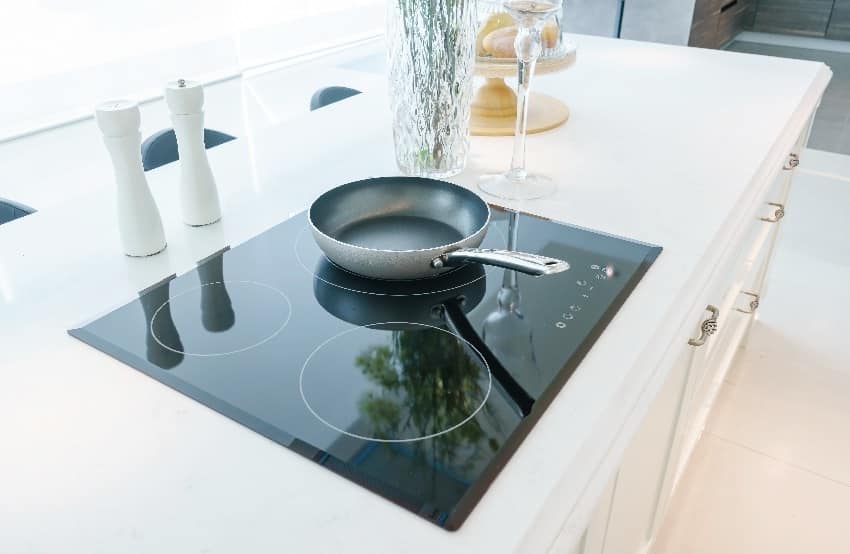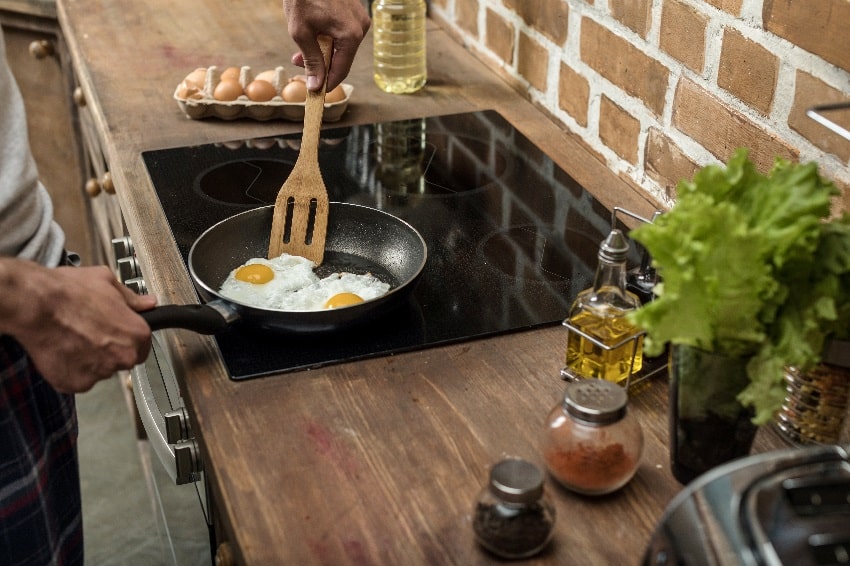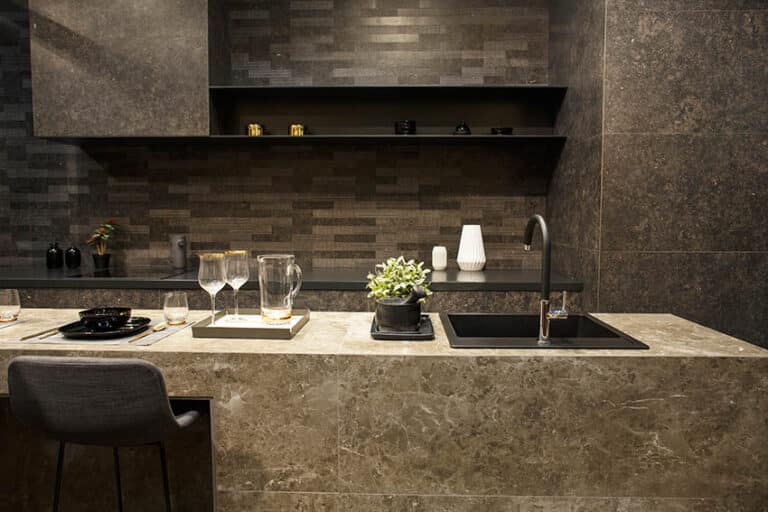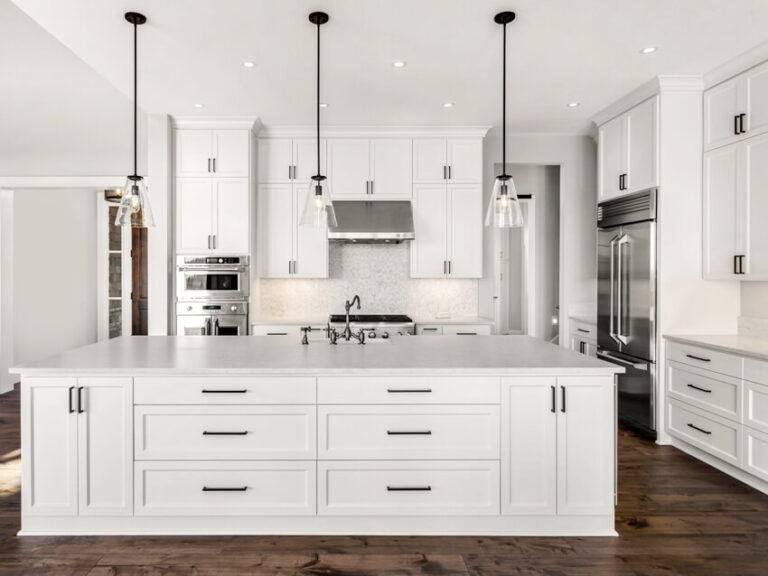Ceramic vs Induction Cooktop (Pros and Cons)
Here we share ceramic vs induction cooktop comparisons including their pros and cons, differences, and how to choose the best when it comes to their features and benefits.
 When it comes to cooking, indeed, skills play a very crucial role. The way you use your ingredients and follow recipes are very essential. Also, the pans and kitchen utensils you use can affect your cooking style.
When it comes to cooking, indeed, skills play a very crucial role. The way you use your ingredients and follow recipes are very essential. Also, the pans and kitchen utensils you use can affect your cooking style.
However, there is another important element that can impact on your cooking and that is the type of cooktop you use. Well, the cooktop is the most used object in your kitchen.
That’s why you need to carefully choose the best one that’ll complement your cooking style and abilities.
There are two well-known types of cooktops available in the market – ceramic and induction. In this article, we’re going to talk about these two cooktops.
What are their differences? What is more efficient, cost-effective, and better for long-term use? Let us discuss these questions.[toc]
Difference Between A Ceramic vs Induction Cooktop?
In Terms of Cooking
Ceramic cooktops use coiled metal components below the tempered ceramic glass. The said components are electronically heated according to the user’s chosen temperature.
After that, the coil will then heat the ceramic surface. Once the surface heats up, the pan will also be heated. The components present in a ceramic cooktop repeatedly turn on and off. That’s why its heat control is not that precise.
On the other hand, induction cooktops use powerful and high-frequency electromagnets in lieu of heated up coils. The magnets inside an induction cooktop produce a strong magnetic field to quickly heat up the pan.
The cooktop’s surface won’t be heated; the electromagnets only focus on heating the pan.
So, when it comes to cooking food, no doubt induction cooktops will give you much more convenience. If you like cooking fast and making dishes in bulk, an induction cooktop is a more ideal choice.
In Terms of Efficiency
Ceramic and induction cooktops are both efficient in producing freshly made and well-prepared food. When cooking, these cooktops allow you to cook with control and precision.
They also both use touch and digital controls in regulating the heat. These cooktops can also have important features such as timers or pause buttons. Some of them even have a child-lock feature.
What then are their differences in terms of efficiency? First, induction cooktops provide you more cooking control.
You have more options in controlling the heat with induction cooktops. The heat in an induction cooktop can be efficiently changed in an instant. In ceramic cooktops, the changing of heat might take more time.
Evidently, more recipes can be tried with an induction cooktop.
Ceramic cooktops have components that are slightly slow in heating the pan up. If you’re getting late for your work, ceramic cooktops won’t be a good option to cook with.
Cooking at an efficient speed with an induction cooktop is more advisable. Cooking times are highly decreased because induction cooktops use a powerful magnetic field.
In Terms of their Cost
The cost differences of these two popular cooktops are a bit different. Ceramic cooktops are normally less pricey than induction cooktops.
However, induction cooktops may be a bit more pricey. But talking about long-term use, an induction cooktop is actually more cost-efficient.
In terms of electricity cost, some users say that they save more power with an induction cooktop. Why? It’s because foods are cooked faster with it. Meaning, there’s less power consumption.
Unlike a ceramic cooktop, it’s less pricey, but cooking food with it isn’t quick enough. More electricity would be consumed first before successfully cooking food with a ceramic cooktop.
However, to be well-informed about these things, you can try consulting a cooking expert. Ask them for more details about the power levels and other features of each cooktop kind.
In Terms of Safety
Induction and ceramic cooktops both provide a huge variety of safety functions and features. They can be both used without causing accidents and injuries.
Commonly, an induction cooktop is proven to be much safer for children. Because every time it heats up, the surface won’t get too hot. This makes it a better choice for kitchen islands where people sitting might accidentally touch the surface.
Accidentally touching it won’t be that dangerous. An induction cooktop only releases heat if it detects a pan.
A ceramic cooktop could be sometimes unsafe for children as it can get too hot once it’s activated. However, it can cool down fast after it’s deactivated.
Pros And Cons Of Glass Ceramic vs Induction Cooktops
Glass Ceramic Cooktop Pros
- It’s safe to use. Once the power is turned off, the heated surface will cool down quicker than electric and gas burners. You won’t need to worry about harmful fumes, gas leaks, and flames.
- The compressed heat straightly travels in an upward direction.
- It usually has a bigger number of surface burners than gas-powered cooktops.
- It’s easy to maintain.
- It’s less pricey than induction cooktops.
- In terms of looks, it’s usually more elegant and stylish.
Glass Ceramic Cooktop Cons
- You’ll be required to use much heavier cookware that contains a smooth and flat bottom. The reason is to make it fit onto the whole surface.
- A glass-ceramic cooktop’s surface can be easily damaged, cracked, scratched, and shattered.
- The change in temperature is slow. It takes more time to heat up.
- Compared to an induction cooktop, a ceramic cooktop takes more time to cool the surface down.
- It uses higher power consumption.
Induction Cooktop Pros
- It’s very safe to use. Children who are learning how to cook can use induction cooktops. Accidentally touching the surface won’t be dangerous. No flames and harmful gas fumes are released with induction cooktops.
- A lot more energy and power-efficient than ceramic cooktops.
- You can cook food on an induction cooktop very fast. It heats the surface very quickly.
- The temperature can be easily controlled and you can effortlessly make adjustments whenever you’re cooking.
- It’s very easy to clean and maintain.
- It makes the kitchen look classier and trendy.
Induction Cooktop Cons
- It uses a very low amount of radiation. Nonetheless, researchers have found it still safe to be used.
- It needs special types of cookware. The pan and pot must be iron or stainless to allow magnetic conduction. The cookware must also have a flat and smooth bottom so that the electromagnetic field is evenly distributed.
- The cookware must be placed on the surface with maximum care. Otherwise, the surface might get scratched or cracked.
- It is expensive.
Which Is Best – Ceramic Or Induction Cooktop?
Obviously, the winner of the contest is the induction cooktop. It has more benefits and better features than a ceramic cooktop.
It is also much safer to use and foods can be cooked in a faster and more accurate way.
Although ceramic cooktops also have their advantages, induction cooktops offer more competitive features that are truly beneficial for every user. But still, the final decision will always be yours to make.
Do you have a favorite when it comes to a ceramic vs induction cooktop? Let us know in the comments below this article. For more related content take a look at our article about gas vs electric cooktop.










